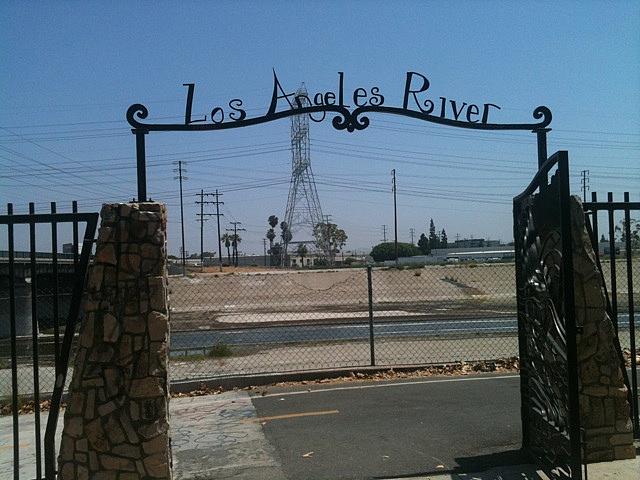Los Angeles' Forgotten River

It might cause a snicker or two from many Angelenos, but last week, I took a tour of the Los Angeles River.
Yes, Los Angeles has a river. The first 32 miles of it actually flow throw the city; the rest of the 51-mile river flow through other cities to the ocean. But it is largely unrecognized for its natural beauty.
Our tour guide was writer and historian Jenny Price, author of "Thirteen Ways of Seeing Nature in L.A." and "Flight Maps: Adventures with Nature in Modern America." At a surprisingly picturesque stop in Atwater Village in northeast Los Angeles, Price told this year's National Health Journalism Fellows, "This gorgeous river right here is the reason Los Angeles exists."
Indeed, the Los Angeles Rivers drains three mountain ranges and has been one of the best water sources in all of Southern California. So how did we lose our river? The Army Corps of Engineers restrained it after catastrophic floods in 1938 with the concrete walls we are familiar with today. The river orginally had a seven-mile variation but is now restricted to 500-foot channels. We drained the river and used it to dump sewage, Price lamented.
"We're spending huge amounts of energy to pump water into Los Angeles and then throwing away our local water," said river activist Joe Linton who also guided the group.
The rain water that is channeled into the river carries toxins from lawns and roads. The concrete river takes up valuable potentially green space in a city that has the lowest amount of open space per capita of any major urban area in the country. It has become symbol of urban blight and social inequities, instead of a refuge for the communities that surround it.
The National Health Journalism Fellows learned about Los Angeles' massive river revitalization program from several sources, including Carol Armstrong, co-director of the Los Angeles River Project Office . The Council adopted the Los Angeles River Revitalization Master Plan in 2007, a 50-year project with over 240 potential sites. Revitalization will include the creation of community gardens, a 51-mile bikeway and trail system, areas for boating, and the creation of new green spaces. Advocates of the project say that creating these open spaces is good for communities health because it gives people place to walk, improves mental health and makes the water cleaner and safer for those who are in contact with it.
Councilmember Ed P. Reyes, chair of the LA River Ad Hoc Comittee spearheaded the Master Plan. For him, the plan represents social justice. Pipelines and freeways were built in places where people were not represented, so revitalizing the river is an opportunity to address the discriminatory acts of the 30s, 40s and 50s. "Spanish-language speakers and Latinos were the recipients of the effects of living along transportation corridors," he said.
While there are very few dissenters, there are bureaucratic hurdles to seeing the plan through. The Army Corps' feasibility studies need to be finished in order to move forward, Reyes said. And that requires political will, a difficult thing to achieve because the project will outlast the terms of the many politicians who might take credit for its benefits.
The plan is an expensive one but Reyes says that local investors see big payoffs. "The private sector sees money, they see opportunity," he told the Fellows. 80 acres of new park space has already been funded and build in the last six years.
The Atwater Village stretch of the river is a good example of how the river can be transformed and integrated back into the city. It is one of three soft-bottom stretches of the concrete river, where a natural estuary has formed and retains water year-round. The river in this part of town is flanked by walking and bicycle paths.
(Thanks to Philip Graitcer for the photo and video of Atwater Village.)
[video:http://www.youtube.com/watch?v=uvZ3ffK5TGY&feature=related]
"Revitalizing the L.A. River is really about revitalizing Los Angeles," Price said.
Learn more about the Los Angeles River:
From Freeways to Waterways: What Los Angeles Can Learn From Seoul by Katherine Lonsdorf, KCET
A Vision of a Park on a Restored Los Angeles River by Fred A. Bernstein, The New York Times
L.A. River: Tour Operators Gain Access, Recreational Zones Identified by Zach Behrens, KCET
EPA navigates new policy designating Los Angeles River a 'traditionally navigable waterway' by Molly Peterson, KPCC
Urban Waters Federal Partnership, information from the Environmental Protection Agency
The Los Angeles River Revitalization Master Plan website
The city that said 'no' (about water quality issues in Maywood, a city along the river) by Janet Wilson, Christian Science Monitor
Read more posts about this year's National Health Journalism Fellowships.

